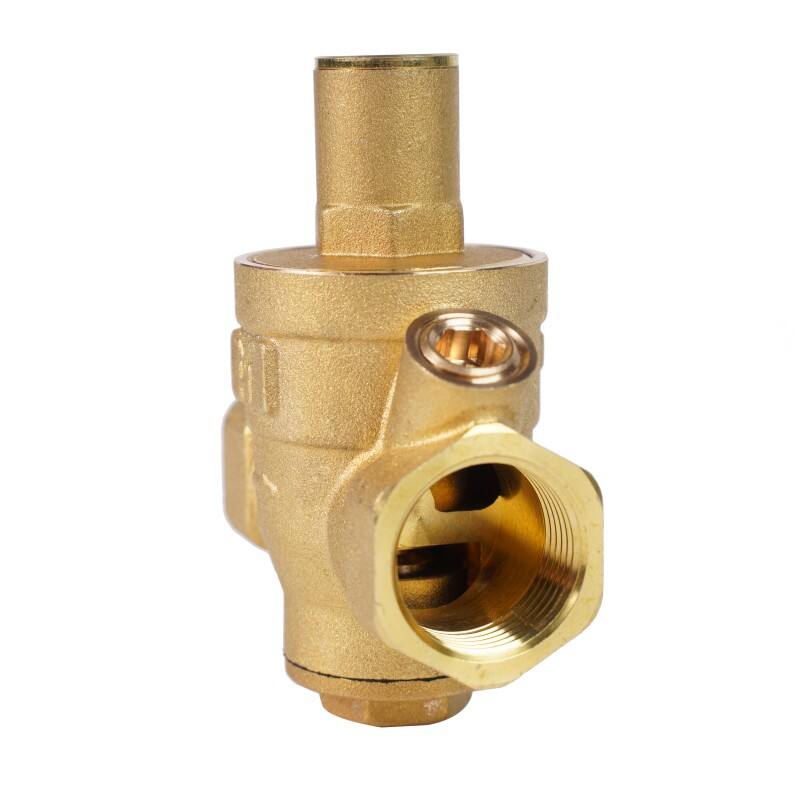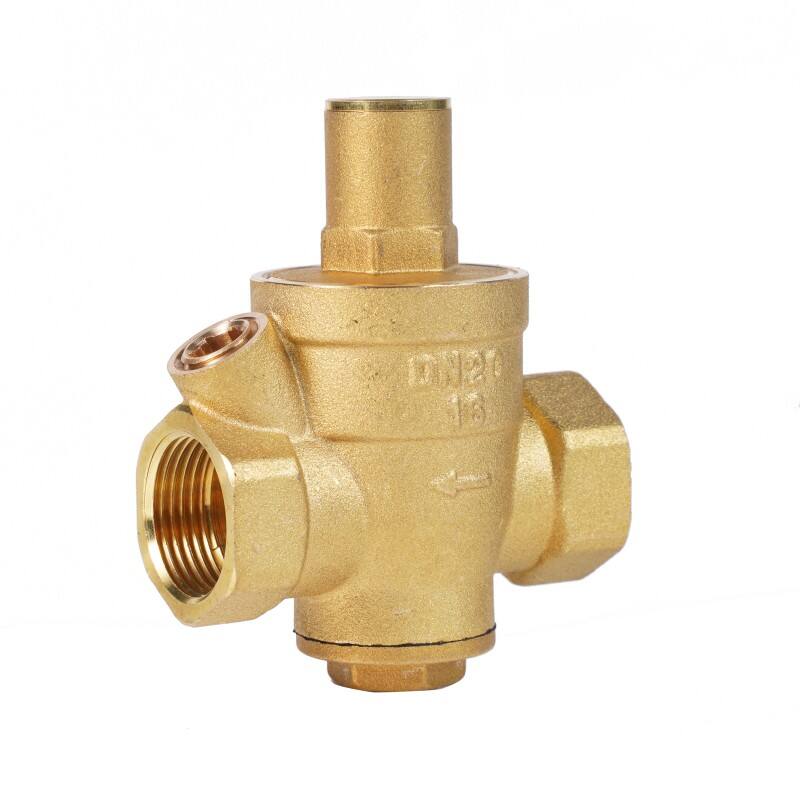Understanding the Critical Role of Pressure Control in Modern Pipeline Networks
In today's complex industrial and commercial pipeline systems, maintaining optimal pressure levels is paramount for operational efficiency and safety. Pressure reducing valves (PRVs) serve as the cornerstone of effective pressure management, offering a sophisticated solution to regulate flow and protect valuable infrastructure. These essential components act as vigilant guardians, continuously monitoring and adjusting pressure levels to ensure smooth, reliable operations across diverse applications.
The implementation of pressure reducing valves has revolutionized how industries manage their fluid distribution systems. From municipal water networks to industrial processing plants, these devices have become indispensable in preventing system damage, reducing water loss, and optimizing resource utilization. Their ability to automatically maintain downstream pressure regardless of fluctuating upstream conditions makes them a crucial investment for any organization serious about system integrity and operational excellence.
Core Benefits of Pressure Reducing Valve Implementation
Enhanced System Protection and Longevity
Installing pressure reducing valves significantly extends the lifespan of pipeline infrastructure by preventing excessive pressure that can lead to premature wear and failure. When pressure spikes occur, these valves automatically adjust to maintain safe operating conditions, protecting expensive equipment and preventing catastrophic failures that could result in costly downtime and repairs.
The protective function of pressure reducing valves extends beyond just the immediate pipeline components. These devices safeguard entire systems, including pumps, meters, and various end-use fixtures. By maintaining consistent pressure levels, they reduce the stress on pipe joints, seals, and other critical connection points, ultimately decreasing maintenance requirements and replacement frequency.
Cost Reduction Through Efficient Operation
The financial benefits of implementing pressure reducing valves are substantial and multifaceted. By preventing excessive pressure, these devices significantly reduce water waste through leaks and breaks, leading to lower operational costs. Organizations typically observe a marked decrease in their utility bills following proper PRV installation, as controlled pressure means less energy consumption and reduced water usage.
Moreover, pressure reducing valves help optimize pump operation by reducing the workload on pumping systems. This results in lower energy consumption and decreased wear on pump components, translating to reduced maintenance costs and extended equipment life. The initial investment in quality PRVs often pays for itself through these ongoing operational savings.

Technical Advantages in System Design and Operation
Precision Control and Automation Capabilities
Modern pressure reducing valves offer unprecedented levels of control accuracy. Advanced models feature sophisticated control mechanisms that can maintain downstream pressure within extremely tight tolerances, ensuring optimal system performance under varying conditions. This precision is particularly valuable in applications where stable pressure is critical for process quality or safety requirements.
The integration of smart technology with pressure reducing valves has opened new possibilities for system monitoring and control. Many contemporary PRVs can be equipped with digital sensors and communication capabilities, allowing for remote monitoring, automatic adjustment, and real-time data collection. This level of automation and control helps operators optimize system performance while minimizing manual intervention.
Flexibility and Adaptability in Various Applications
The versatility of pressure reducing valves makes them suitable for a wide range of applications across different industries. From high-pressure industrial processes to residential water supply systems, PRVs can be sized and configured to meet specific requirements. Their adaptability extends to handling different types of fluids, temperatures, and pressure ranges, making them truly versatile components in system design.
Engineers appreciate the flexibility that pressure reducing valves provide in system design and modification. These devices can be installed at various points in a pipeline network, allowing for zoned pressure control and system optimization. This flexibility enables the creation of more efficient and reliable pipeline systems while accommodating future expansion or modification needs.
Safety and Compliance Considerations
Regulatory Compliance and Risk Mitigation
In many industries, the installation of pressure reducing valves is not just beneficial but mandatory for regulatory compliance. These devices help organizations meet safety standards and operating requirements set by various regulatory bodies. By maintaining pressure within specified limits, PRVs play a crucial role in risk management and liability reduction.
The implementation of pressure reducing valves also contributes to workplace safety by preventing accidents related to excessive pressure. This is particularly important in industrial settings where high-pressure systems could pose significant risks to personnel and equipment. PRVs act as a reliable safety mechanism, providing peace of mind to operators and management alike.
Environmental Impact and Sustainability
The environmental benefits of pressure reducing valves are becoming increasingly important in today's sustainability-focused world. By preventing leaks and reducing water waste, these devices contribute significantly to water conservation efforts. The reduced energy consumption associated with optimized pressure control also helps organizations meet their environmental goals and reduce their carbon footprint.
Furthermore, pressure reducing valves support sustainable infrastructure management by extending the life of pipeline systems and reducing the need for frequent replacements. This translates to less material waste and reduced environmental impact from construction and maintenance activities, aligning with modern sustainability practices and green building standards.
Maintenance and Long-term Considerations
Preventive Maintenance Requirements
While pressure reducing valves are generally reliable, implementing a proper maintenance program is essential for ensuring their continued effectiveness. Regular inspection and maintenance help identify potential issues before they become problems, ensuring optimal performance and longevity. This preventive approach is far more cost-effective than dealing with emergency repairs or system failures.
Modern pressure reducing valves are designed for easy maintenance and service, with many featuring modular components that can be replaced or upgraded as needed. This design philosophy reduces maintenance downtime and simplifies the repair process, making it easier for organizations to maintain their pressure control systems in peak condition.
Future-Proofing Pipeline Systems
Investing in quality pressure reducing valves is a key strategy for future-proofing pipeline systems. As infrastructure needs evolve and demand patterns change, these devices provide the flexibility and adaptability needed to accommodate future modifications. Their ability to handle varying flow conditions and pressure requirements makes them valuable assets in long-term system planning.
The integration of smart technology and IoT capabilities in modern pressure reducing valves positions organizations well for the digital transformation of infrastructure management. These advanced features enable predictive maintenance, performance optimization, and better decision-making through data analytics, preparing systems for the challenges of tomorrow.
Frequently Asked Questions
How often should pressure reducing valves be inspected and maintained?
Professional inspection of pressure reducing valves should be conducted at least annually, with more frequent checks in critical applications or harsh operating environments. Regular maintenance typically includes checking for proper pressure settings, inspecting for wear or damage, and cleaning or replacing components as needed.
What are the signs that a pressure reducing valve needs replacement?
Key indicators include inconsistent downstream pressure, unusual noises during operation, visible leaks or corrosion, and inability to maintain set pressure levels. Regular monitoring of system performance can help identify these signs early, allowing for planned replacement before failure occurs.
Can pressure reducing valves be retrofitted into existing pipeline systems?
Yes, pressure reducing valves can be successfully integrated into existing pipeline systems with proper planning and design. The installation process typically requires careful consideration of system requirements, space constraints, and operational needs. Professional assessment and installation ensure optimal performance and system compatibility.

